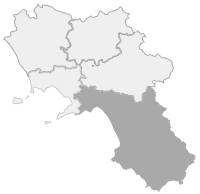In the city of the most famous medical school of the Middle Ages, Salerno, there could not be missing Giardino dei Semplici with the plants necessary for the therapies in use at that time.
It was created by the master Matteo Silvatico in the first twenty years of the 14th century, who had earmarked a piece of land formerly owned by his family. The land was located in an area of terraced gardens in the center of Salerno, along the axis that connects the Villa Comunaleand the Castle of Arechi, which dominates the city from above.
In addition to the favorable position that blocked the north wind, the presence of water was also decisive, thanks to the nearby Fusandola stream, which flows in the area. Silvatico, creator of the collection of medicinal plants, held real live lessons in the garden for the students of the school, to show them the plants and illustrate their characteristics and properties. None of them were aware of it yet, but that garden would later be identified as the oldest example of a botanical garden in Europe.
With a leap of three centuries, those green areas with a palace reappear in a notarial deed. It describes the presence of a source of water, the panorama of the sea and the surrounding mountains and the garden with figs, bitter orange trees and vines clinging around the pillars of an almost collapsed pergola. These seventeenth-century gardens, substantially corresponding to today's, stood above the medieval garden, identified at a depth of about two meters with respect to the current ground level.
In the 1990s, the Giardino della Minerva, as it is called today, underwent a major restoration, which led to the reconstruction of the ancient Giardino dei Semplici di Silvatico. The pergola of vines also remains on one of the different levels on which the garden is arranged, where some sections of the oldest walls and a suggestive stairway remain, together with the magical panorama that unites the sea, the hills and the historic centre of the city.





Comments powered by CComment